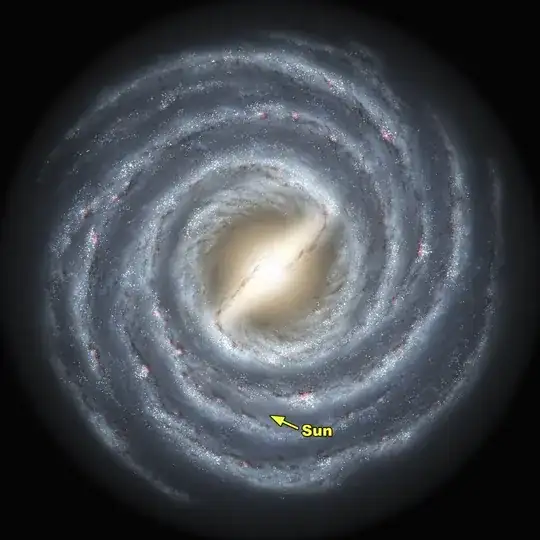Depending on the theories, the center of our galaxy is a super massive black hole, this is easy to accept as a truth, but what I couldn't simply devour is how the solar system is orbiting around it while not getting absorbed to the inside ? It's simple to understand how earth orbits the sun, but the black hole is something more energetic and at most pulls everything to it's center.
By looking to this image for example:

If we follow the bright lines it looks like everything is really going to the true center like a vortex. If you have any simple ways to enlighten me or any references to read I will be thankful, because sometimes I don't know what topic should I search for to find answers without posting questions like this one.
And also, would our galaxy run out of stars since the black hole devours them fast while they take too long to reproduce ?